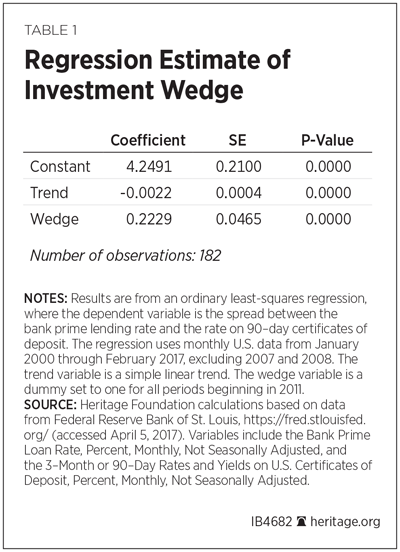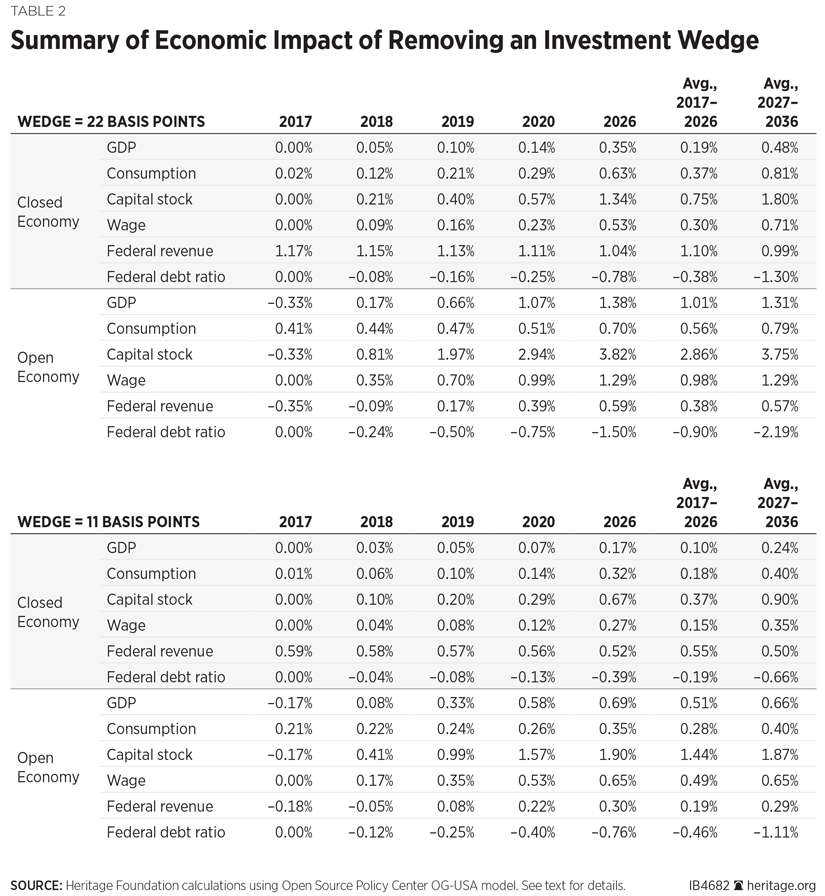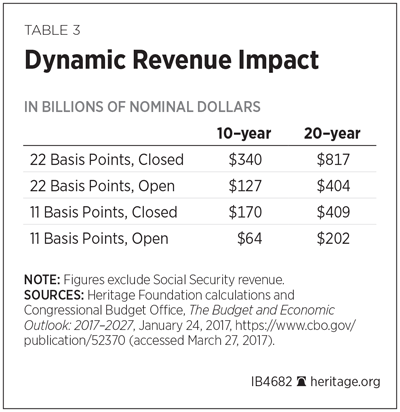The 2010 Dodd–Frank Wall Street Reform and Consumer Protection Act spawned approximately 400 separate rulemakings across the financial sector, and was the most extensive financial regulatory bill since the 1930s.[REF] It expanded the authority of existing federal regulators, created new federal agencies, and dramatically altered the regulatory framework for several distinct financial sectors.[REF] Critics have argued that the Dodd–Frank Act failed to adequately address the causes of the 2008 financial crisis, imposed unnecessarily high compliance burdens on firms, worsened the too-big-to-fail problem, and contributed to the unusually sluggish recovery.[REF]
Several researchers have estimated the firm-level impact of Dodd–Frank. For instance, one study estimates the change in commercial banks’ noninterest expenses following the Dodd–Frank Act;[REF] another estimates the number of full-time-equivalent compliance jobs required to comply with Dodd–Frank.[REF] Similarly, researchers at the Minneapolis Federal Reserve estimate that the cost of increased regulation could have decreased community banks’ return on assets by between 12 and 14 basis points,[REF] and economists at the Mercatus Center present survey results for the compliance efforts of banks with less than $10 billion.[REF] This Heritage Foundation Issue Brief, in contrast, examines the macroeconomic effects related to Dodd–Frank.
Dodd–Frank and the Economy
Perhaps due to the diverse aspects of Dodd–Frank, very few researchers have published estimates of macroeconomic effects related to the act.[REF] The act altered, for example, regulations in securities markets, banking, derivatives markets, and non-bank consumer loans. It required regulators to identify systemically important financial institutions and treat them differently, with potential repercussions on the frequency and severity of future recessions. The wide variety of data sources needed, along with the ongoing nature of implementing these regulations, makes it very difficult to quantify the overall impact of Dodd–Frank.
Ideally, a macroeconomic analysis or dynamic budget score of the repeal of the Dodd–Frank Act would rely on microeconomic evidence and theory to guide the incorporation of a handful of key components into a macroeconomic model with a richly modeled financial sector. This Issue Brief does not attempt to be a full analysis; rather, it takes a first step to show that such analysis is worth pursuing and possible to perform.
For this report, we used a standard macroeconomic model to quantify the benefits of reducing one of the likely effects of Dodd–Frank: excess borrowing costs. We did not attempt to model the financial sector or the uncertain impacts of Dodd–Frank on potential future recessions. Our results are intended to provoke a scholarly conversation, not to conclude one.
We model Dodd–Frank as an “investment wedge”—a gap between the interest rate paid by borrowers and that received by lenders. In macroeconomics, various wedges are used to introduce distortions into a model economy. For example, tax, labor, and productivity wedges are frequently used to estimate the impact that various policy changes might have on the economy.[REF]
Our choice to use this wedge relies on research, cited above, which finds microeconomic evidence that financial intermediation has been made more costly by the new regulations. The microeconomic evidence does not, however, give a precise estimate of the size of the wedge.
Following an approach used by economists Philippe Bachetta and Stefan Gerlach,[REF] we estimate the investment wedge using data on the difference (the spread) between the bank prime lending rate and the rate on 90-day certificates of deposit (CDs).
Our estimate is generated by employing a dummy-variable regression on monthly U.S. data from January 2000 through February 2017, excluding 2007 and 2008.[REF] A dummy variable, set to 1 for all periods beginning in 2011, represents the change in the wedge due to Dodd–Frank. Using this procedure, the data show that the spread between the bank prime lending rate and the 90-day CD rate increased approximately 22 basis points. That is, after Dodd–Frank implementation began, the spread was 22 basis points higher than it was from 2000 to 2006. (See Table 1.)
Our estimate may overestimate or underestimate the effects of Dodd–Frank. We show macroeconomic results for a 22-basis-point wedge and also for a 10-basis-point wedge.

Macroeconomic Effects of Repealing Dodd–Frank
Using the Open Source Policy Center’s OG-USA open-economy model of the U.S. economy, we found that removing a 22-basis-point investment wedge associated with Dodd–Frank would increase U.S. income by 1.38 percent in 2026, with an annual average increase of 1.01 percent from 2017 to 2026. The closed-economy version—which assumes no trade or foreign investment—shows a smaller impact, a 0.35 percent increase in income in 2026, with an annual average increase of 0.19 percent from 2017 to 2026.
Removing an 11-basis-point wedge results in proportionately smaller effects.
The full results are reported in Table 2. Wages increase a bit more than total income in each case, and the strongest response is in the size of the capital stock.
The closed-economy model is probably more realistic than the open-economy model in describing the pattern of adjustment in the short run, although it is less helpful in estimating the size of the long-run adjustment. The open-economy model adjusts as quickly as modelers allow it,[REF] but the closed-economy adjusts gradually, since the economy takes time to generate more physical investments to take advantage of the lower borrowing rates.
In the closed-economy framework, the economy achieves as much income growth above baseline in the first seven years as it does in the subsequent 12 years.

Budgetary Effects
The OG-USA model adjusts tax revenue automatically, but holds government spending at baseline levels. Thus, the growth leads to a decline in the federal debt ratio of 1.5 percent in 2026, with an annual average decline of approximately 1 percent from 2017 to 2026. The OG-USA model does not yet model federal interest spending or central bank policy realistically, thus we do not report the budgetary benefits of lower interest spending.
As Table 3 shows, the model estimates between $64 billion and $340 billion in 10-year revenue gains from removing an investment wedge.[REF] Over a 20-year horizon, the revenue gains are between $202 billion and $817 billion. To maximize comparability with other budget estimates, we adopted Congressional Budget Office estimates of baseline federal revenue.[REF]
Perhaps un-intuitively, the revenue gains are larger in the closed-economy model, even though national income grows much more rapidly in the open-economy model. In the closed-economy, the immediate impact of the removal of the wedge is a large increase in capital income, which is taxed at high rates in the U.S. (in fact, it is double taxed). As the economy expands the supply of capital in response to the lower wedge, the return falls, but it remains higher than baseline even in the long run. In an open economy, by contrast, the return on capital is set in global markets, and the removal of an investment wedge does not raise taxable income for U.S.-based investors.

Policy Solutions
President Donald Trump’s recent executive order detailed seven core principles for regulating the U.S. financial system.[REF] The order calls for “efficient, effective” financial regulations that “foster economic growth,” which means that it is incompatible with the bulk of the Dodd–Frank Act. Dodd–Frank’s answer to the 2008 financial crisis was to institute more federal regulation and oversight—despite the fact that this approach has repeatedly failed in the past.[REF] Worse, Dodd–Frank did little to address the root causes of the crisis and simply expanded the federal safety net for financial firms. Congress should repeal the Dodd–Frank Act.
—Norbert J. Michel, PhD, is Senior Research Fellow in Financial Regulations and Monetary Policy in the Thomas A. Roe Institute for Economic Policy Studies, of the Institute for Economic Freedom, at The Heritage Foundation. Salim Furth, PhD, is Research Fellow in Macroeconomics in the Center for Data Analysis, of the Institute for Economic Freedom.
Appendix: The OG-USA Model
The OG-USA model was originally developed by Jason DeBacker and Richard W. Evans,[REF] among others, based loosely on an approach popularized by Alan Auerbach and Laurence Kotlikoff.[REF] The model is open-source software, hosted by the Open Source Policy Center, where end users can personalize it and offer contributions.[REF]
The branch of the model that one of us personalized and used for this project can be found at https://github.com/salimfurth/OG-USA/tree/tax_analysis. Readers are invited to review and check our work. We emphasize that any remaining errors are our own responsibility.
The OG-USA model integrates a microsimulation of the personal income tax with an overlapping-generations model. Firms are competitive and perfectly symmetric. Agents have perfect foresight. There is no involuntary unemployment.
Federal finance in the model mixes rich modeling of individual income tax revenues and Social Security revenues and distributions with simple modeling of corporate income taxes, government purchases, and transfers other than Social Security.
Financial intermediation is not modeled. The excess costs of financial intermediation assumed by the investment wedge are not assigned as any individual’s income.
In its current form, OG-USA assumes that the federal government pays the market interest rate on its debt. This assumption has little influence on other aspects of the model, but it departs substantially from consensus forecasts of federal interest payments over the next decade. Thus, we do not report savings that arise from lowering the federal debt.
Every model massively simplifies the real world, and this one is no exception. Any of these assumptions, however, could be relaxed without overturning the core result of our simulation: If financial intermediation becomes less costly, investment will rise and lead to an increase in wages and national income.


